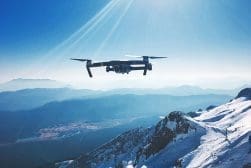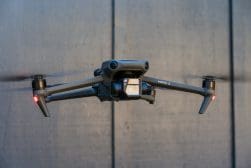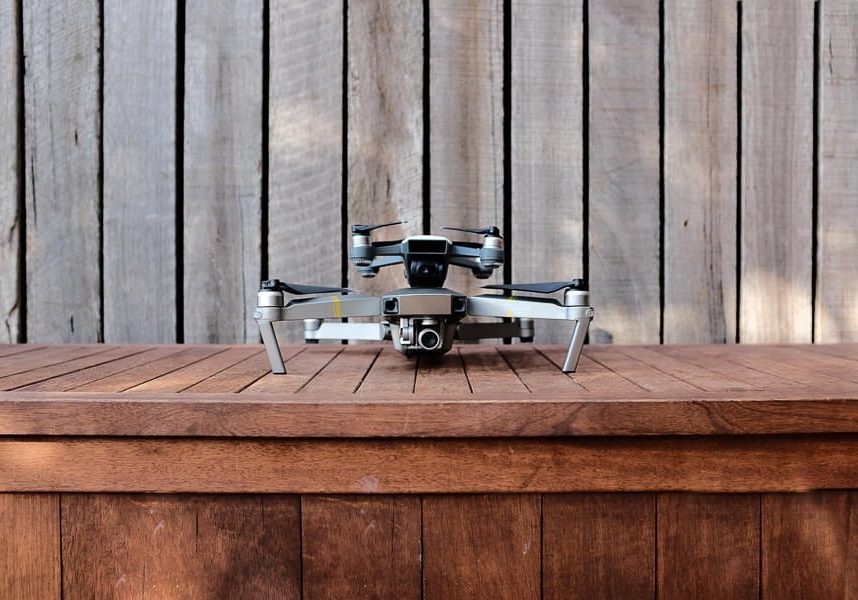
How Much Does a Drone Cost in 2024? Comprehensive Price Guide
Discover the latest drone prices with our price guide. From beginner drones to professional models, learn all the costs associated with owning a drone.
Are you considering joining the world of drone enthusiasts?
With so many options available, it’s essential to understand the various costs associated with owning a drone, including the drone cost.
In this comprehensive price guide, we’ll explore the drone costs by purpose and features, the hidden costs of ownership, and whether building or buying a drone is the right choice for you.
Key takeaways
- The cost of drones varies based on purpose and features, ranging from $30 for beginner models to $10,000+ for commercial.
- Consider hidden costs such as maintenance & repair, accessories, insurance fees and registration when buying a drone.
- Select the right drone by considering experience level, intended use flight time/range camera quality & portability.
Drone Costs by Purpose and Features
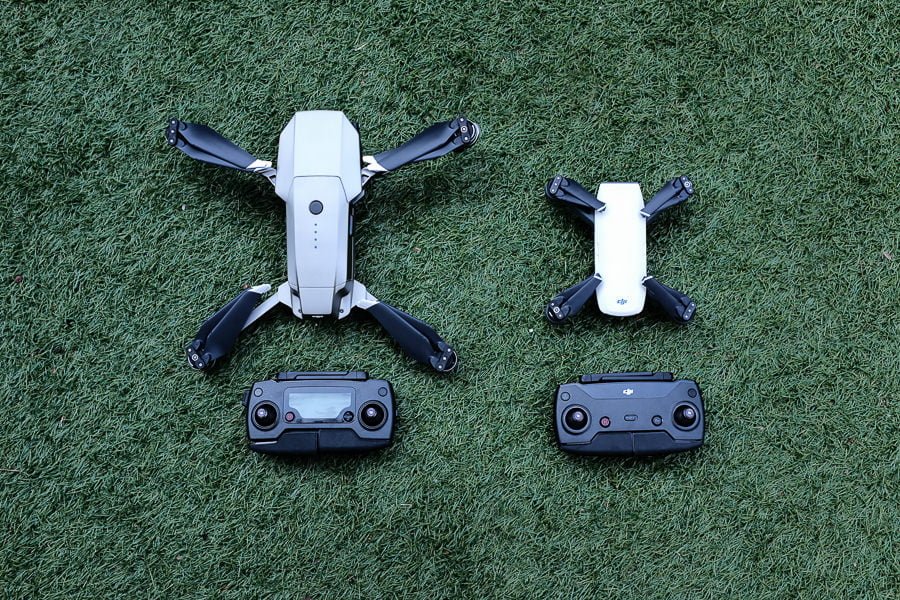
Drones have come a long way since their military origins, and with that evolution, the military drone cost has also changed.
Today, they serve a variety of purposes, from recreational flying to professional cinematography and commercial applications. Naturally, the price of a drone varies based on its purpose and features.
One might wonder, how much does a drone cost?
Consumer (beginner) drones, perfect for first-time pilots, range from $30 to $150, while camera drones, designed for capturing stunning aerial photos and videos, can set you back anywhere between $400 and $1000.
Racing drones, built for speed and agility, cost between $150 and $500, while professional drones, used for film and cinematography, start at $3,000. How much are drones used for racing really depends on the accessories you use.
Finally, commercial drones, designed for various industrial applications, begin at an impressive $10,000.
With such a wide array of options, it’s crucial to consider what you’ll be using the drone for before making a purchase.
In addition to the drone itself, there are other factors to consider when calculating the total cost of ownership.
These include size and weight, camera capabilities, flight time and range, portability and storage, user experience level, and intended use.
Moreover, owning a drone comes with hidden costs, such as drone batteries, electronic speed controllers (ESC), propellers, and remote control. How much is a drone greatly depends on it’s use-case and the accompanying accessories.
In the following sections, we’ll dive deeper into the costs and features of each drone category, as well as the hidden costs of ownership.
Beginner Drones
For those just starting their drone journey, beginner drones are an excellent option.
These affordable and easy-to-use drones typically cost between $30 and $150.
But don’t let their low price tag fool you – beginner drones offer a flight time of approximately 15 minutes and a range of 100 meters, making them relatively easy to fly and maintaining good stability.
Investing in a high-cost advanced drone as a novice may lead to a substantial monetary setback, and it may not be a worthwhile expenditure if you don’t find the activity enjoyable.
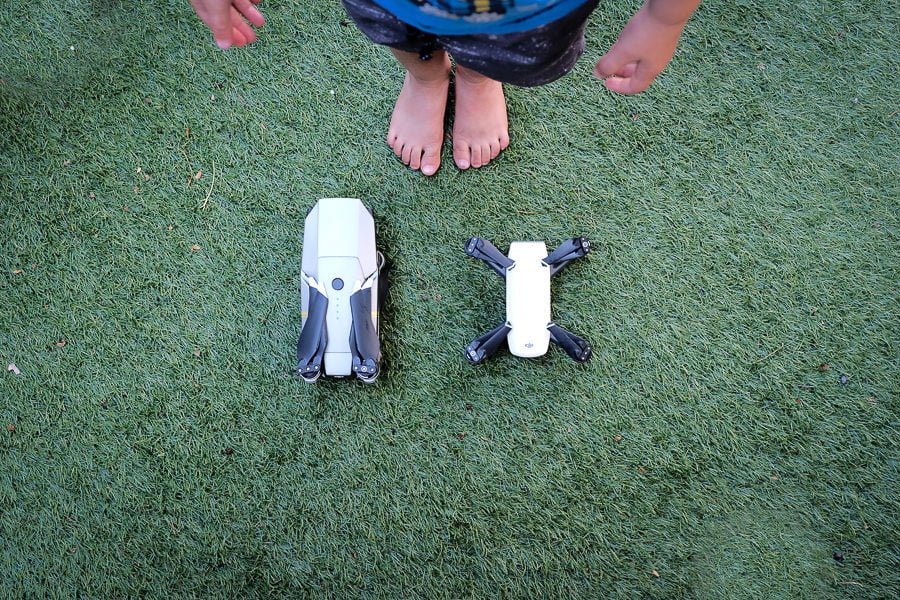
DJI Mavic Pro Platinum vs DJI Spark | My grandson has small feet, for size comparison!
Beginner drones are perfect for learning the basics of drone flying before advancing to more complex and feature-rich drones.
They allow new pilots to gain confidence and experience before investing in a more expensive model.
(There are also such things as drones for kids, with plenty of safety features to protect children.)
So, if you’re new to drone flying, start with a beginner drone and work your way up as you become more comfortable and skilled.
Check out the best drones under $200 for some ideas.
Camera Drones
If capturing stunning aerial photos and videos is your primary goal, consider investing in a camera drone.
These drones provide excellent image and video quality, with drone with camera cost typically ranging from $400 to $1000. Drones in the price range of $300 to $500 give great value for money.
They come equipped with features like 1080p to 2.7k video resolution, a 12-megapixel sensor, and a 1/2.3-inch fixed lens.
High-end consumer camera drones come with more advanced features, such as 21MP, full 1-inch camera sensors, additional obstacle avoidance sensors, and improved internal processing.

I took this with a DJI Spark | 1/320 f/2.6 ISO 100 | JPEG image edited in Lightroom
Battery life is also of great importance in a drone, as it directly impacts the flight time and duration of filming, especially when using time-flying toys for recreational purposes.
When selecting a camera drone, consider factors such as flight time, range, camera quality, and portability, as well as your budget and skill level.
Investing in a camera drone can be a great way to capture stunning aerial photos and videos. With the right drone, you can get excellent image and video quality, long battery life, and long battery life.
Here’s a table showcasing the price and main specifications of some popular DJI drones:
| Drone Model | Price Range (USD) | Maximum Flight Time | Maximum Range (meters) | Maximum Video Resolution | Sensor Size |
|---|---|---|---|---|---|
| DJI Mini 2 | $449 | 31 minutes | 10,000 | 4K/30fps | 1/2.3″ |
| DJI Air 2S | $999 | 31 minutes | 12,000 | 5.4K/30fps | 1″ |
| DJI Mavic 2 Pro | $1,499 | 31 minutes | 18,000 | 4K/30fps | 1″ |
| DJI Phantom 4 Pro V2.0 | $1,729 | 30 minutes | 7,000 | 4K/60fps | 1″ |
| DJI Inspire 2 | $2,999 | 27 minutes | 7,000 | 5.2K/30fps | Super 35mm |
| DJI FPV Combo | $1,299 | 20 minutes | 10,000 | 4K/60fps | 1/2.3″ |
Check out our reviews of these two popular beginner drones:
Racing Drones
For adrenaline junkies and speed enthusiasts, racing drones are the perfect choice.
These drones are specially designed for speed and agility, with drone prices ranging from $150 to $500.
Entry-level cheap drones cost between $100 and $250 and come equipped with GPS-enabled flight and a camera for first-person view (FPV) flights.
Intermediate racing drones offer additional features such as GPS sensors, up to 30 minutes of flight time, higher-resolution cameras, and longer control distances.
However, the quality of the camera is not particularly high, resulting in lower-grade video footage.
It is crucial to thoroughly read the manual, familiarize yourself with the controls, and practice at low altitudes and low speeds before attempting to operate an intermediate racing drone.
And, if speed is your top priority, lightweight racing drones can reach up to 100 mph and beyond.
Among racing drones is a sub-category of FPV drones, which can be used for entertainment as well as general entertainment.
High-quality FPV drones usually start from $2,000+.
There are also specialist camera drones, such as waterproof drones and underwater drones.
Professional Drones
Designed for film and cinematography purposes, professional drones are high-end, feature-rich, and expensive, costing $3,000 and above.
These drones are equipped with advanced capabilities, such as the ability to support large and heavy cameras and remote controls and come with a higher price tag compared to other drones.
Professional drones are employed for professional video coverage, offering filmmakers and cinematographers the tools they need to capture breathtaking aerial footage.
When considering a professional drone, it’s essential to evaluate the features and capabilities that best suit your needs, as well as the budget you’re willing to allocate.
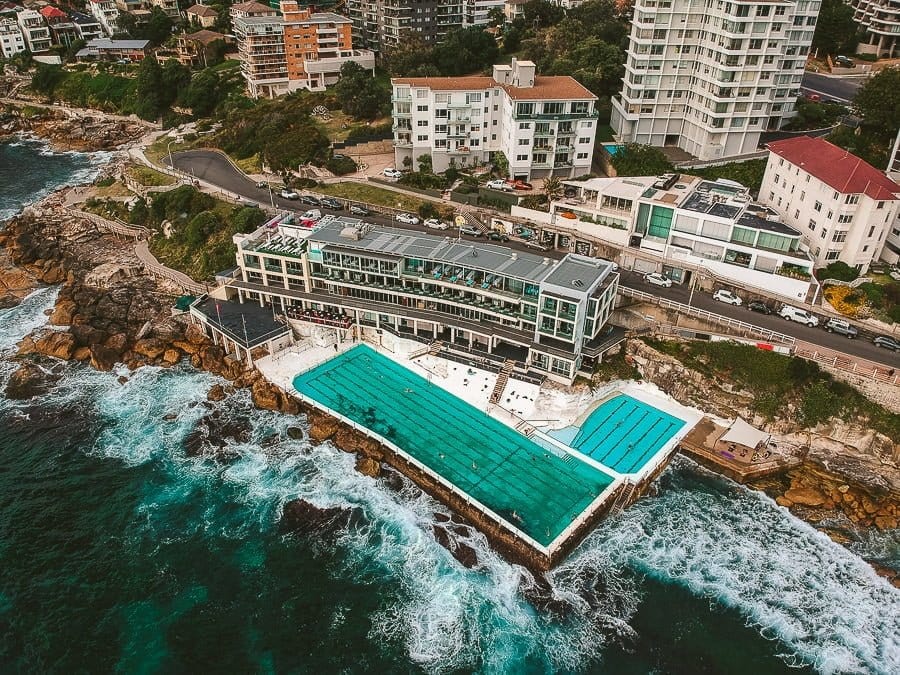
I actually used the DJI Spark (a budget drone) for professional commercial photography of this pool in Sydney.
While the cost may be higher, the investment in a professional drone can pay off through the production of stunning, high-quality videos that set your work apart from the competition.
The DJI Inspire 3 is an example of a professional drone, with features such as:
Full-Frame 8K ProRes RAW/CDNG | 1/1.8-inch Ultra-Wide Night-Vision FPV Camera | Dual Aircraft Frame Configurations: Tilt Boost & 360° Pan | O3 Pro Video Transmission with Dual-Control | Centimeter-Level RTK Positioning and Waypoint Pro | Supports DJI Transmission/Master Wheels/Three-Channel Follow Focus
Commercial Drones
Commercial drones cater to various industrial applications, with prices starting at $10,000.
These drones are employed for specialized tasks such as mapping, inspection, passenger flight, and package delivery. Commercial drones are equipped with many features; one common feature is an infrared camera.
This camera can be used for various tasks, such as location search, surveying, and rescue operations.
Federal Aviation Administration (FAA) regulations dictate that commercial drones must be no more than 55 pounds in weight and have specific size restrictions.
When selecting a commercial drone, consider the intended use, budget, and legal requirements in your country.
While the initial cost may be significant, the advanced features and capabilities of commercial drones, as well as military drone technology, can lead to increased efficiency and productivity in various industries.
Hidden Costs of Drone Ownership

Drone filters are a useful accessory that allow you to shoot at slower shutter speeds in daylight.
Beyond the initial purchase price, owning a drone comes with hidden costs such as maintenance and repair, which may range from a few hundred to several thousand dollars depending on the type of drone and the extent of the damage.
Drone accessories such as extra batteries and propellers may also be necessary and can add to the overall cost of ownership. Additionally, insurance fees, registration fees, and license fees may be applicable.
Being aware of these hidden costs is vital when considering a drone purchase. In the following sections, we’ll explore these costs in more detail, discussing licensing and registration, insurance, maintenance and repairs.
Licensing and Registration
Licensing and registration fees vary depending on the country and drone type, with costs ranging from $5 to $300.
In the United States, hobby pilots must obtain their TRUST certificate prior to flying, while those who will be compensated for their flight, such as through direct payment or selling photos online, must be Part 107 certified and follow the related guidelines.
The Part 107 test for a commercial drone license is priced at $175, and there may be additional fees for a prep course to assist with the process. Drone registration with the FAA is priced at $5 and is valid for a period of 3 years.
Failure to possess a valid license may result in a monetary fine and potential confiscation of the drone. For most beginner drone pilots, registration of the drone is all that is required, so no additional costs will be incurred.
When considering a drone purchase, factor in the costs of licensing and registration to avoid any surprises down the road.
Insurance
Drone insurance protects against damage and liability, with policies costing from a few hundred to a few thousand dollars.
Drone insurance can be purchased on a daily or monthly basis, with daily policies costing approximately $30 to $40, and monthly policies costing between $60 and $100 for a 30-day period.
Annual premiums are around $500 to $750. The premium amount is contingent upon a range of considerations, such as experience and background, the scope of coverage and limits, and the type of business.
When considering drone insurance requirements, it’s important to take into account the country and intended use.
In the United States, it is recommended to obtain drone liability insurance coverage, and commercial drones are not typically covered by personal insurance policies. Legal liability insurance should be considered as a minimum.
Make sure to research and compare insurance options to find the best policy for your needs and budget.
Maintenance and Repairs
Maintenance and repair costs can add up, especially for beginners, with expenses ranging from $50 to $600 depending on the brand and model. The most costly and time-consuming repair for a drone is the motor.
For those with limited experience, it is not recommended to attempt motor repair on their own.
Setting aside a budget for maintenance and repairs is essential when purchasing a drone. Regular maintenance can prolong the life of your drone and ensure optimal performance.
Be prepared for unexpected repair costs and always follow the manufacturer’s guidelines to minimize the risk of damage and costly repairs.
Building a Drone vs. Buying One
Building a drone can be a fun and rewarding experience, allowing you to customize your drone to your specific requirements. However, it may not always be the most cost-effective option compared to buying a ready-made drone.
Building a standard drone typically requires an investment of $350 to $500, which is slightly more than purchasing one in the same category.
In the following sections, we’ll explore the components required for a DIY drone build, their costs, and the pros and cons of building a drone compared to buying one.
Whether you’re a hands-on hobbyist or prefer the convenience of a ready-made drone, understanding the costs and benefits of each option can help you make the right decision for your needs.
DIY Drone Components
The components necessary for constructing a DIY drone include the drone frame, motors, electronic speed controllers, propellers, flight controllers, transmitters, receivers, and batteries.
The cost of these components may vary based on their quality and features.
For example, the price of a drone motor can vary from $10 to $100, and a set of 4 ESCs typically costs between $30 and $50.
Drone frames can vary in cost depending on factors such as weight, design, and materials.
When building your own drone, you’ll need to allocate a budget for additional parts, such as wires and connectors, which are essential for the successful assembly of a DIY drone.
It is recommended to allocate up to $50 for additional components. Keep in mind that the costs can add up, and building a drone may not always be cheaper than buying a ready-made one.
Pros and Cons of Building a Drone
Building a drone can be advantageous as it provides the opportunity for personalization and a hands-on educational experience.
By constructing your own drone, you can select the components and features that best suit your needs and preferences.
However, constructing a drone can also incur higher costs and require more effort than purchasing a pre-assembled drone.
If you’re not confident in your DIY skills or simply prefer the convenience of a ready-made drone, buying one may be the better option.
Ultimately, the decision to build or buy a drone will depend on your personal preferences, budget, and technical abilities. Consider the costs and benefits of each option, and choose the one that best aligns with your needs and goals.
Selecting the Right Drone for Your Needs
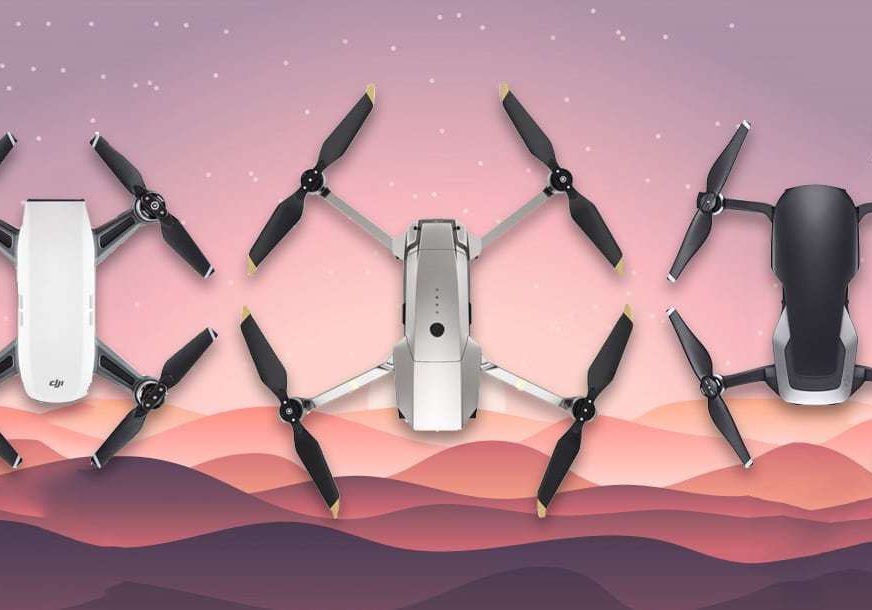
Choosing the right drone depends on factors such as experience level, intended use, flight time, camera quality, and portability.
By considering these factors, you can make an informed decision and find the perfect drone for your needs.
In the following sections, we’ll explore each of these factors in more detail and provide guidance on selecting the right drone.
Whether you’re a first-time pilot, an aerial photographer, or a drone racing enthusiast, understanding the various factors that contribute to the overall drone experience will help you make the best choice when purchasing a drone.
From beginner drones to high-end professional models, there’s a drone out there for everyone.
Experience Level
Your experience level plays a crucial role in selecting the right drone.
Beginner drones are simpler and require less experience to operate, while more advanced drones may have more complex features and thus require more experience.
If you’re new to drone flying, start with a beginner drone and work your way up as you become more comfortable and skilled.
Keep in mind that professional and commercial drones often require specific qualifications and certifications to operate legally.
For example, in order to become a drone pilot, it is typically necessary to possess a bachelor’s degree in aviation, engineering, or unmanned aircraft systems operations and pass the Part 107 knowledge test.
By considering your experience level and qualifications, you can select the right drone for your needs and skill set.
Intended Use
Another important factor in selecting the right drone is its intended use. Drones are available for recreational, professional, and commercial use.
For example, if you’re interested in aerial photography, you’ll want to consider factors such as camera quality, flight time and range, portability, and storage.
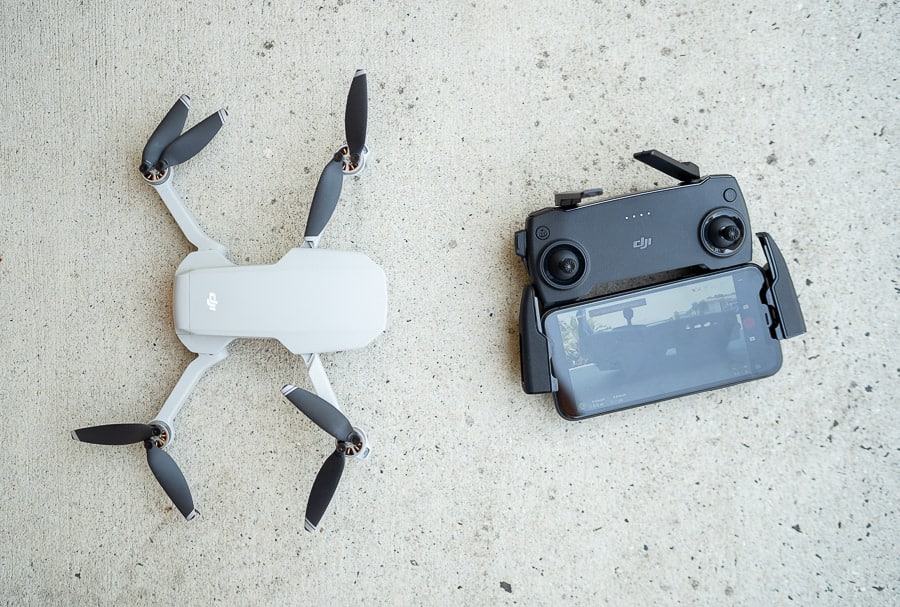
Depending on where you plan to fly the Mavic Mini, its weight of only 249g can make it a huge advantage.
When selecting a drone for a specific purpose, it’s essential to research and compare the features and capabilities of different models to find the best fit for your needs.
By considering your intended use and requirements, you can choose the right drone that will provide the best performance and value for your investment.
Flight Time and Range
Flight time and range are essential factors to consider when evaluating a drone purchase, as they can influence the quality of the footage and the overall user experience.
Toy and racing drones typically have a flight time of up to 10 minutes, while commercial drones can fly for up to 45 minutes or longer.
When selecting a drone for photography and videography, it is recommended to opt for one with a flight time of up to 25 minutes and a range of 3km.
Some beginner camera drones have surprisingly respectable flight times – see the Mavic 2 range, for example.
Extended flight times and ranges can enable users to capture more creative shots and enjoy a more satisfactory user experience.
By considering the flight time and range of different drone models, you can make an informed decision and choose the drone that best suits your needs.
Camera Quality
Camera quality is critical for aerial photography and videography as it directly impacts the quality of the images and videos taken.
Higher-quality cameras are capable of capturing more detail and producing superior results. The camera quality options available for drones span from basic to high-end.
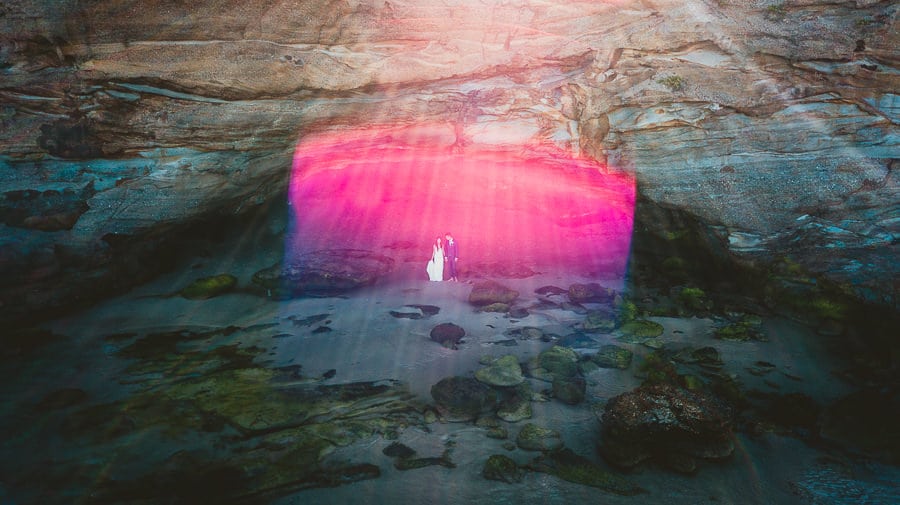
I took this with a Mavic Pro | 1/320 f/2.6 ISO 100
When selecting a drone for photography and videography, it’s important to consider the camera capabilities and features of different models.
By comparing the camera quality of various drones, you can find the perfect drone to capture stunning, high-quality images and videos that will make your work stand out.
Portability and Storage
Portability and storage are essential elements to consider when buying a drone, as certain drones can be folded and come with a carrying case for convenient transport.
The size and weight of a drone can directly impact its portability, and some models are specifically designed to be more compact and lightweight for easy transportation.
When selecting a drone, consider factors such as size, weight, and portability, as well as any additional storage options that may be included with the drone.
By keeping these factors in mind, you can choose the right drone that will be easy to transport and store, ensuring that you can take your drone wherever your adventures may lead.
Final Words
In conclusion, understanding the various costs associated with owning a drone is essential when considering a drone purchase.
From the initial cost of the drone itself to the hidden costs of ownership, knowing what to expect can help you make an informed decision and select the right drone for your needs.
Whether you’re a beginner looking to learn the ropes or professional seeking advanced features, there’s a drone out there for everyone.
So, go ahead and take to the skies with confidence, knowing you’ve made the right choice.
FAQs
How high can drones fly?
Drones can fly quite high, with most consumer drones limited to flying below 1600 feet for safety purposes and military drones being able to reach altitudes up to 50,000 feet.
The height limit is largely determined by the range of the drone and the ceiling limits of the flight.
Here’s a table showcasing the maximum altitude that some popular drone models can fly:
| Drone Model | Maximum Altitude (Above Sea Level) |
|---|---|
| DJI Mini 2 | 4,000 meters |
| DJI Air 2S | 5,000 meters |
| DJI Mavic Air 2 | 5,000 meters |
| DJI Mavic 2 Pro | 6,000 meters |
| DJI Phantom 4 Pro V2.0 | 6,000 meters |
| Autel Robotics EVO II | 7,000 meters |
| DJI Inspire 2 | 7,000 meters |
| Freefly Alta X | 7,620 meters |
| Yuneec Typhoon H Pro | 4,500 meters |
What is the price range for beginner drones?
The price range for beginner drones typically falls between $50 and $300, depending on the brand, features, and overall quality. Entry-level drones in this price range often offer basic flight capabilities, simple camera functionality, and user-friendly controls, making them suitable for beginners to learn and practice drone flying.
What factors should be considered when selecting a drone for photography?
- Camera Quality: Consider the resolution, sensor size, and capabilities of the drone’s camera for capturing high-quality photos and videos.
- Stability and Gimbal: Look for drones with stable flight performance and a reliable gimbal system to ensure smooth and steady shots.
- Flight Time: Longer flight time allows for more opportunities to capture images without needing frequent battery changes.
- Obstacle Avoidance: Drones with obstacle avoidance sensors help prevent collisions and ensure safer flights, especially in complex environments.
- Control and Flight Modes: Check for intuitive controls and flight modes that assist with aerial photography, such as follow-me, orbit, and waypoint navigation.
- Portability: Portability is important for photographers on the go, so consider the drone’s size, weight, and ease of transportation.
- Image Transmission: Look for drones with reliable and real-time image transmission systems to monitor and frame shots effectively.
- Post-Processing Capabilities: Assess the availability of raw image capture, allowing for more flexibility and control in post-processing.
- Price and Budget: Consider your budget and the value provided by the drone in terms of camera quality, features, and overall performance.
What is the typical flight range for toy drones?
The typical flight range for toy drones, also known as mini drones or micro drones, is usually around 30 to 100 meters.
These drones are designed for indoor or close-range outdoor flights and are generally more affordable and compact in size compared to larger consumer or professional drones.
Their limited flight range ensures safe and controlled operation within a short distance from the pilot.





